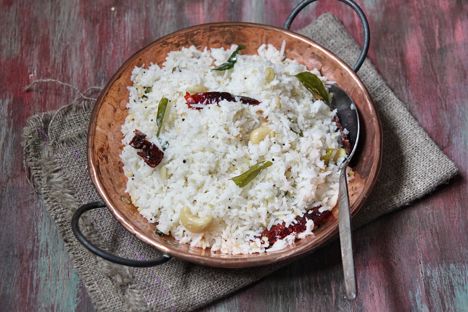Basmati rice is one of the highest quality types of rice available in the shops, and is used in all sorts of cuisines, particularly Indian, Pakistani and Middle Eastern. The grains are long, thin and aromatic, and are solely grown in the foothills of the Himalayas. Cooking basmati rice can cause trouble for some home cooks, who end up with sticky, soggy or undercooked grains, but as long as you have the right ratio of rice to water and follow a few rules, it’s simple to prepare.
Metric
Imperial
- basmati rice
- salt
Method
Variations
Try adding certain spices or herbs to the pan as your rice cooks to infuse certain flavours into the grains. If you're after basmati rice without any stickiness, a few drops of vinegar can help to keep them separate.
Serving suggestions
Basmati rice is especially well suited to Indian cuisine, and can be served as a side dish to all sorts of curries. Nisha Thomas’ Coconut rice adds extra flavour and fragrance, but if you want to make rice the star of the meal try Peter Joseph’s Vegetable biryani pie or Shu Han Lee’s Rabbit biryani. Grame Taylor makes the classic British-Indian dish Smoked haddock kedgeree using basmati, while Eric Chavot serves it as a side to his French Blanquette de veau.
Get in touch
Please sign in or register to send a comment to Great British Chefs.




